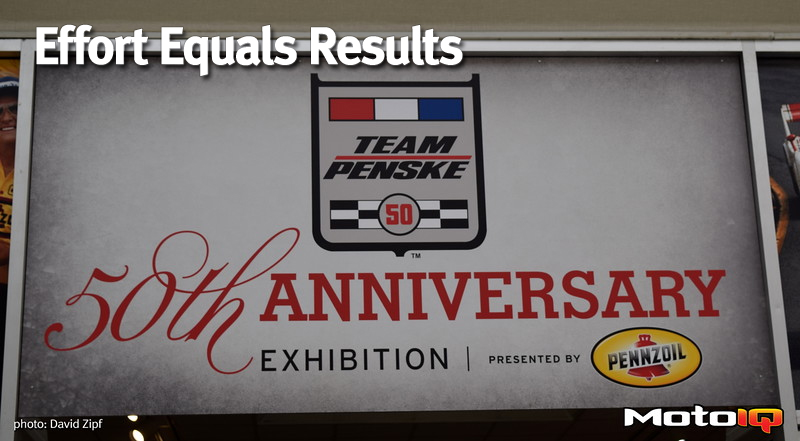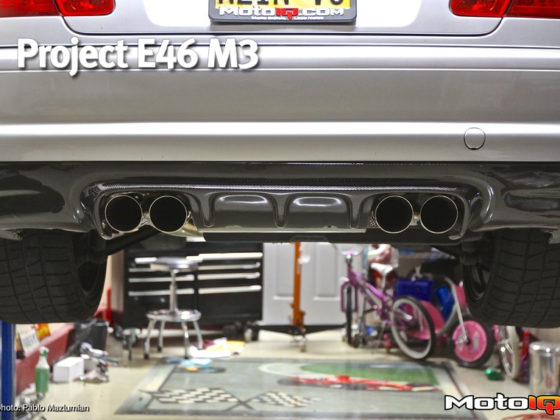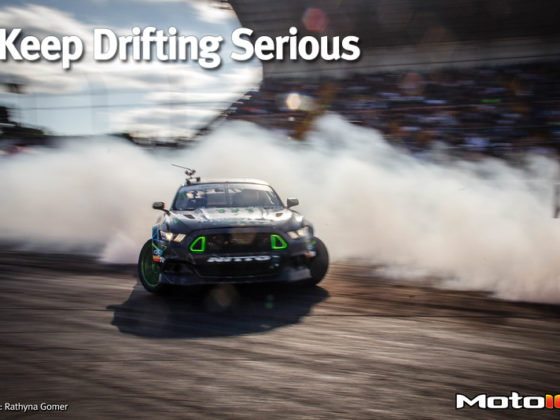,
 One interesting design feature of a number of F1 and IndyCars of the 1970s was the use of the upper arm as the rocker for the damper. This kept the dampers hidden under the bodywork and out of the airflow. It did require a very strong, boxed upper arm though.
One interesting design feature of a number of F1 and IndyCars of the 1970s was the use of the upper arm as the rocker for the damper. This kept the dampers hidden under the bodywork and out of the airflow. It did require a very strong, boxed upper arm though. Once again a 161 ci turbo Offy powers the McLaren. Most cars in this day were either running the modern Ford/Cosworth V8s, or the ancient Offy, an antiquated engine saved by the advent of turbocharging (the fact that the Offy had no head gasket or head bolts meant the block could handle insane amounts of boost). 1972 was also the first year bolt-on wings were allowed. The effect was massive: Bobby Unser’s pole speed obliterated the 1971 record by a full 17 MPH!
Once again a 161 ci turbo Offy powers the McLaren. Most cars in this day were either running the modern Ford/Cosworth V8s, or the ancient Offy, an antiquated engine saved by the advent of turbocharging (the fact that the Offy had no head gasket or head bolts meant the block could handle insane amounts of boost). 1972 was also the first year bolt-on wings were allowed. The effect was massive: Bobby Unser’s pole speed obliterated the 1971 record by a full 17 MPH! As much as I love AJ Foyt, my favorite driver has to be Rick Mears. A former off-road racer he famously said he never drove the same lap twice, always adapting and adjusting as the car and track changed. Originally Penske hired Rick to fill in for Mario Andretti as the Italian/American competed in Formula 1. Rick so impressed Roger that Mears replaced Gary Bettenhausen in 1978. In 1979, Rick brought home his first of four Indy 500 wins, as well as the very first CART championship in this Penske PC6.
As much as I love AJ Foyt, my favorite driver has to be Rick Mears. A former off-road racer he famously said he never drove the same lap twice, always adapting and adjusting as the car and track changed. Originally Penske hired Rick to fill in for Mario Andretti as the Italian/American competed in Formula 1. Rick so impressed Roger that Mears replaced Gary Bettenhausen in 1978. In 1979, Rick brought home his first of four Indy 500 wins, as well as the very first CART championship in this Penske PC6. The PC line is Penske’s own in-house designed car, built and designed in Poole, England. The PC6 was only Penske’s second IndyCar (PCs 1 through 4 were all F1 cars), built with knowledge gained in Formula 1. Like all chassis of its day, it was an aluminum monocoque with fiberglass bodywork. Aero and suspension is not dissimilar to the McLaren M16B, though the wings themselves are smaller and more efficient.
The PC line is Penske’s own in-house designed car, built and designed in Poole, England. The PC6 was only Penske’s second IndyCar (PCs 1 through 4 were all F1 cars), built with knowledge gained in Formula 1. Like all chassis of its day, it was an aluminum monocoque with fiberglass bodywork. Aero and suspension is not dissimilar to the McLaren M16B, though the wings themselves are smaller and more efficient. The engine is not the Offy, but rather a Cosworth DFX. The DFX is based off the all conquering DFV that Cosworth built for Formula 1. The two engines are very similar, the big difference being the displacement: 2.65L instead of the 3.0L F1 mandated. Internal changes also prepared the DFX for the big turbocharger hung off the back and the methanol fuel mechanically injected into the cylinders. The DFX would utterly dominate IndyCar between 1976 and 1987. Not only did this particular PC6 win the 1979 500, but Tom Sneva had already driven it to the USAC Champ Car crown in 1978 (or what we would know today as the Verizon IndyCar Series championship).
The engine is not the Offy, but rather a Cosworth DFX. The DFX is based off the all conquering DFV that Cosworth built for Formula 1. The two engines are very similar, the big difference being the displacement: 2.65L instead of the 3.0L F1 mandated. Internal changes also prepared the DFX for the big turbocharger hung off the back and the methanol fuel mechanically injected into the cylinders. The DFX would utterly dominate IndyCar between 1976 and 1987. Not only did this particular PC6 win the 1979 500, but Tom Sneva had already driven it to the USAC Champ Car crown in 1978 (or what we would know today as the Verizon IndyCar Series championship). In the late 70s, IndyCar designers had a vague idea of what ground effects were and how they worked, but it wasn’t until 1980 when Johnny Rutherford obliterated the field with the Chaparral 2K that ground effects were taken seriously in CART. The 1981 PC9B shows just how far car design had come in two short years. Note the huge sidepods that are completely filled with tunnels for maximum downforce. Because of the added downforce of the tunnels, wings shrank to reduce drag. This would be the year the 200 MPH barrier would be broken at Indy.
In the late 70s, IndyCar designers had a vague idea of what ground effects were and how they worked, but it wasn’t until 1980 when Johnny Rutherford obliterated the field with the Chaparral 2K that ground effects were taken seriously in CART. The 1981 PC9B shows just how far car design had come in two short years. Note the huge sidepods that are completely filled with tunnels for maximum downforce. Because of the added downforce of the tunnels, wings shrank to reduce drag. This would be the year the 200 MPH barrier would be broken at Indy. 


